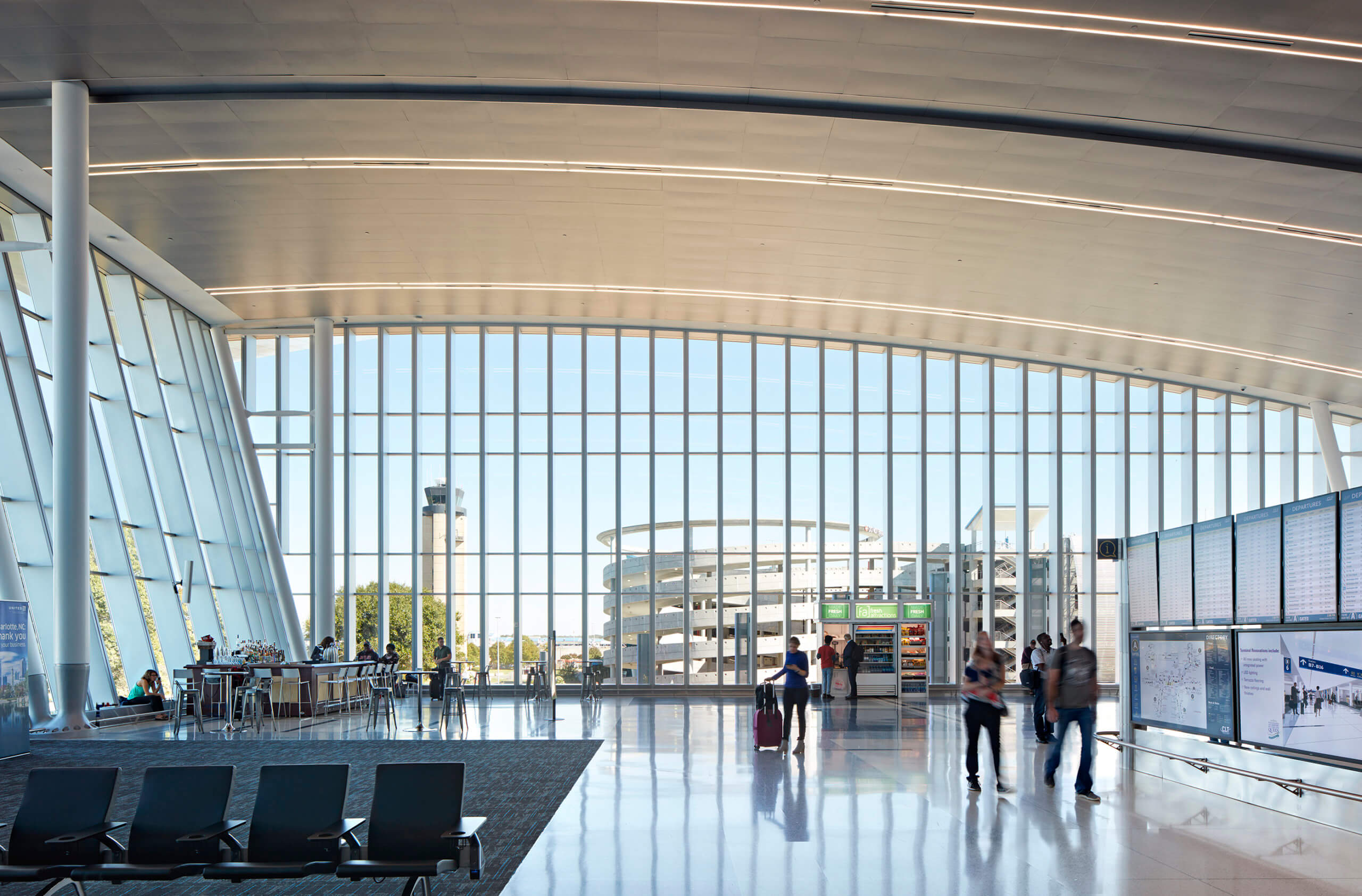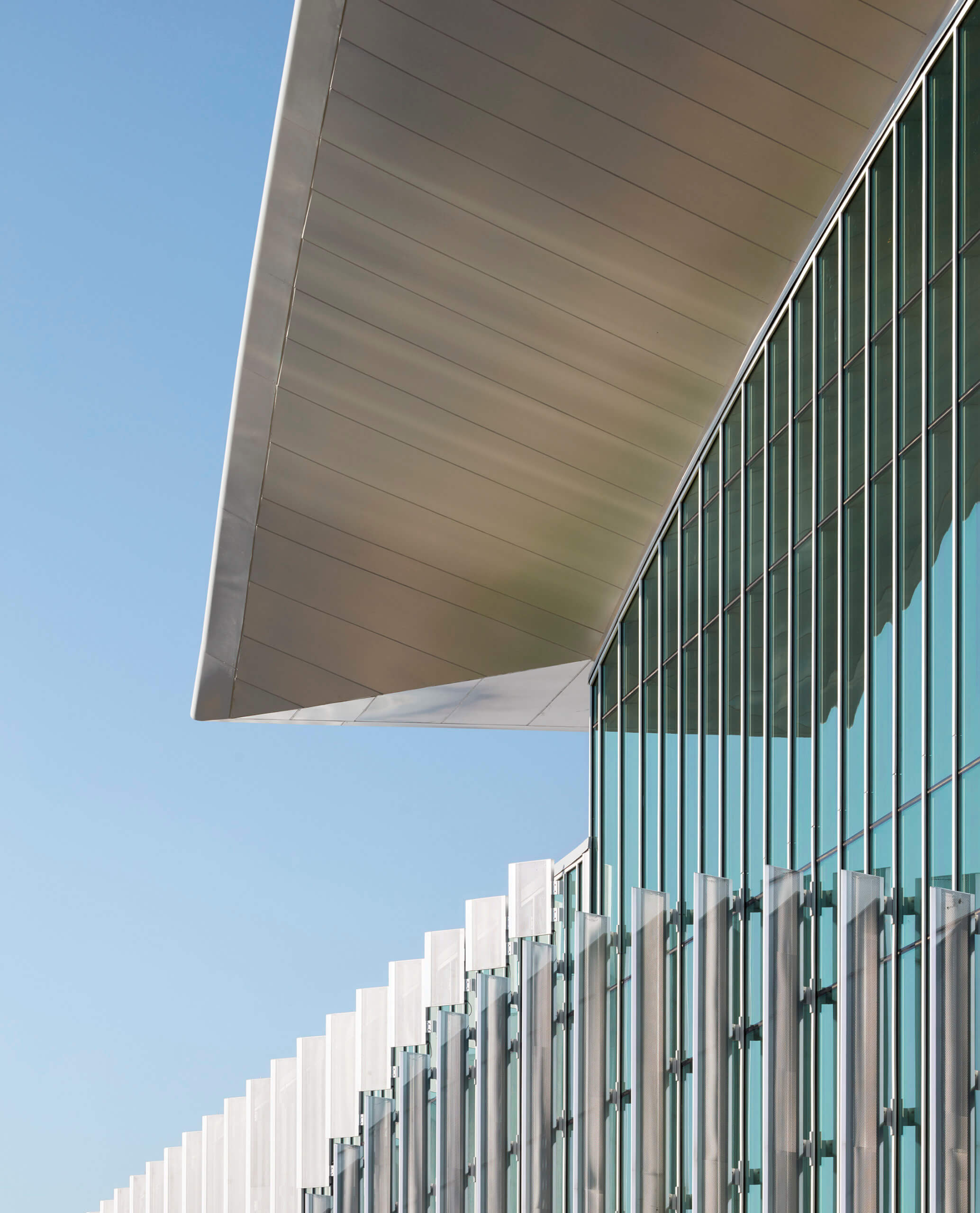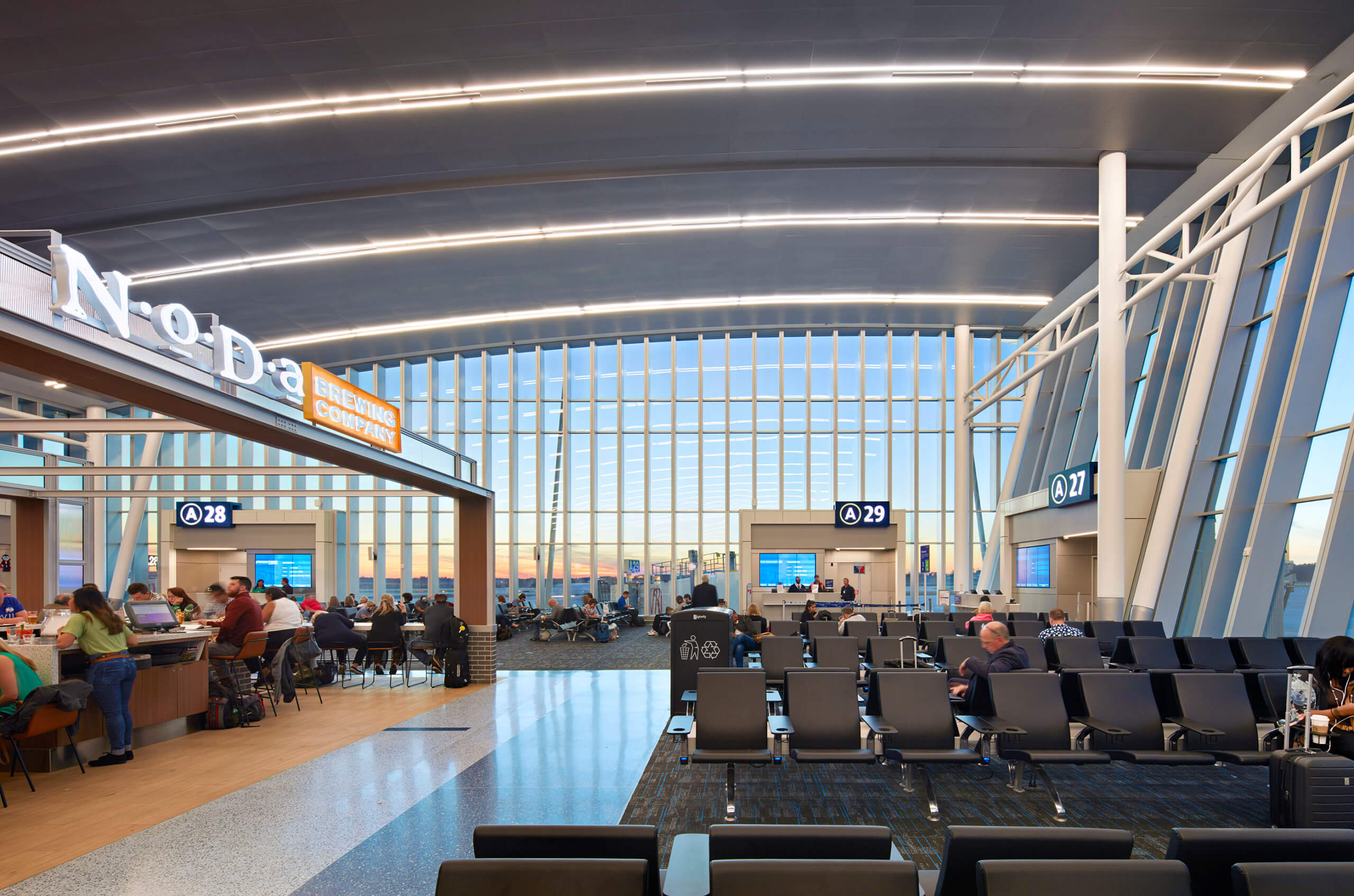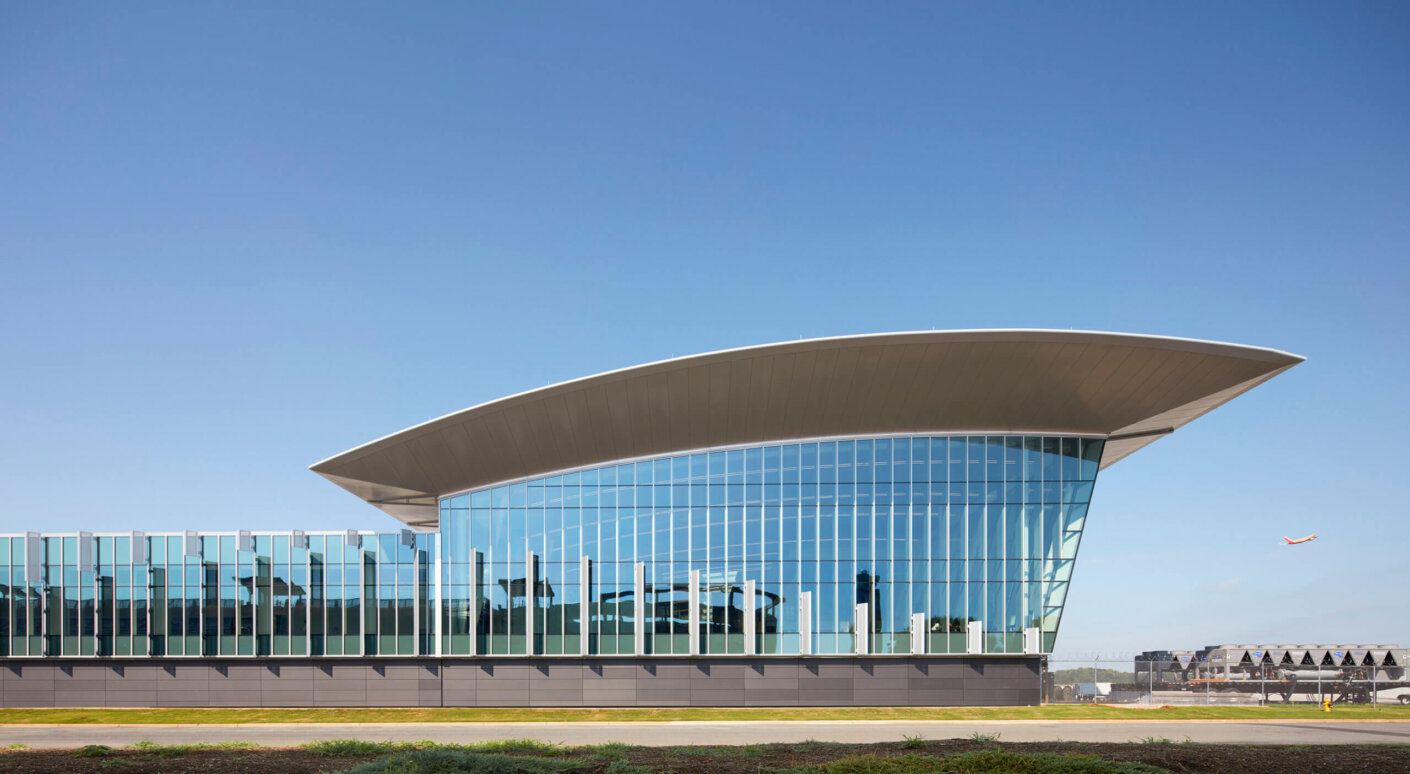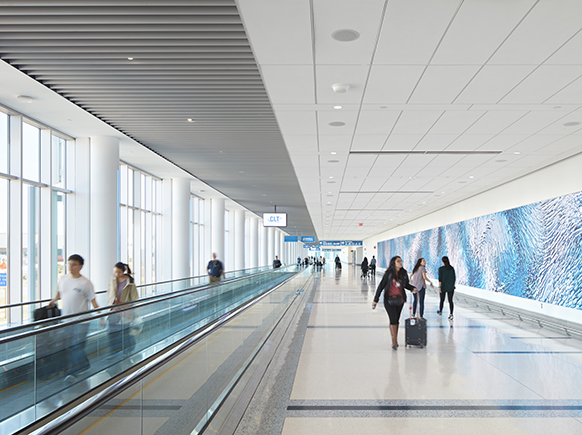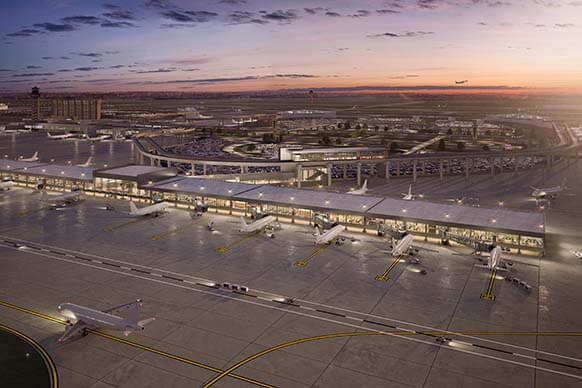Charlotte Douglas International Airport (CLT) has doubled the number of annual visitors in the past 20 years and emerged as the sixth busiest airport in the U.S. As the airport has scaled its operations, new research shows the expansion is also driving higher passenger satisfaction. In fact, users were 68% more likely to give a five-star rating on their overall experience in the new concourse compared to the existing concourse.
The study, commissioned by View Inc. and published in the Journal of Aviation Management, measured the satisfaction of more than 500 concourse visitors over the course of six days. The key finding was that there was significantly higher passenger satisfaction in Concourse A following its redesign by architecture firms Perkins&Will and C Design.
